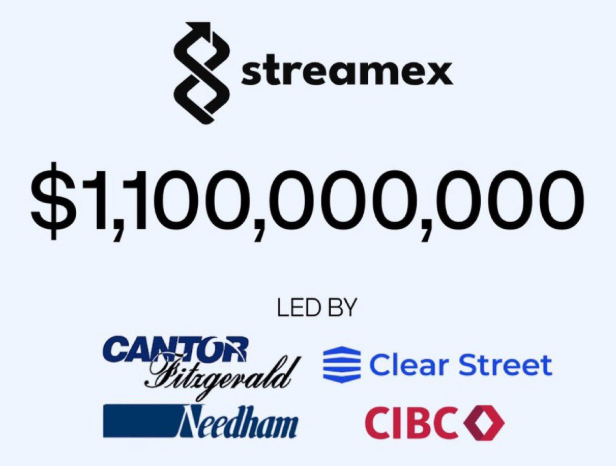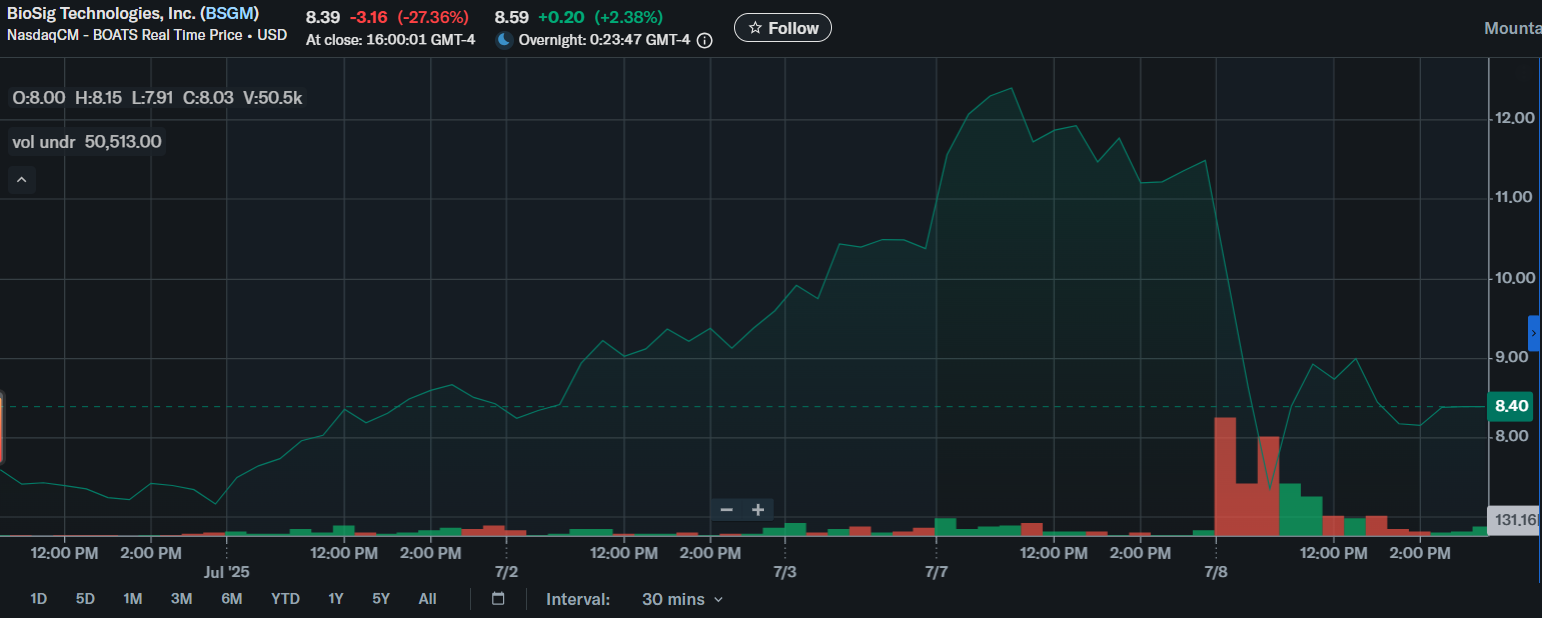BioSig’s bold move to tokenize assets in the $142 trillion commodities market, focusing on gold with Streamex, has sparked significant stock price volatility after the announcement.
BioSig Technologies, Inc. (NASDAQ: BSGM) has announced definitive agreements for up to $1.1 billion in growth financing following its merger with Streamex Exchange Corporation. This financing package includes $100 million in senior secured convertible debentures and a $1 billion equity line of credit, led by Cantor Fitzgerald, Clear Street, and Needham, with advisory support from CIBC.
Key Highlights of the Financing Deal:
-
$100 million in convertible senior secured debt
-
$1 billion equity line of credit
-
Led by Cantor Fitzgerald, Clear Street, and Needham; advised by CIBC
-
Positions BioSig as a major gold bullion holder on Nasdaq
-
Launching a gold-backed treasury management strategy
-
Scaling RWA tokenization across the $142 trillion commodities market
-
Majority of the balance sheet to be backed by vaulted physical gold instead of fiat currency

Daily trading volume in gold bullion stands at $233 billion, significantly higher than Bitcoin’s $55 billion. Streamex believes gold tokenization will surpass Bitcoin in importance due to its broader market size and institutional adoption potential.
The total addressable market for RWA tokenization is projected to reach $16 trillion by 2030. Streamex Co-Founder Morgan Lekstrom emphasized, “The on-chain integration of gold and commodities represents a transformative evolution in global finance. Combining physical gold with a scalable, revenue-generating tokenization platform introduces an entirely new value proposition for token holders.”
Financial Challenges and Market Response
BioSig Technologies has continued to face severe financial difficulties in recent years. Despite a 122% year-over-year revenue increase to $40,000 in 2024, BioSig’s financial struggles deepened with a net loss of $10.51 million, highlighting a critical gap between top-line growth and operational sustainability. The resulting operating margin was approximately -262,750%, highlighting the company's ongoing struggle to generate meaningful income relative to its expenses.
These figures underscore the urgent need for strategic pivots—such as exploring innovative fundraising models or asset tokenization — to restore investor confidence and improve its financial trajectory.
The market initially responded positively to BioSig's announcement of commodity tokenization. On July 7, the company’s stock price surged to over $15, marking a one-year high. However, the optimism was short-lived as the stock price plummeted to $6.5 on July 8, showcasing significant volatility. As of now, BioSig’s stock is trading at $8.6, nearly identical to its pre-announcement levels, indicating mixed market confidence in the long-term viability of this strategy.

Adoption Challenges and Global Insights
Despite the promise of commodity tokenization and blockchain-based solutions, adoption remains uneven. A recent investigation into Yiwu, China — the world's largest small commodities market — revealed limited use of stablecoins for payments and no indications of commodity tokenization.
Strategic advisors to BioSig and Streamex have emphasized gold’s growing role in global finance. Mining financier Frank Giustra stated, “Gold is the ultimate hedge against financial, economic, monetary, and geopolitical risks. Its recent performance reflects the current state of the world across these dimensions, and by all accounts, it still has significant potential for growth.”
Sean Roosen, another advisor and mining entrepreneur, added, “Streamex is the next evolution in mining and commodities finance.” Streamex’s innovative platform aims to redefine how real-world assets are accessed, valued, and monetized, positioning the company as a first mover in the $22 trillion gold market.
 PEPE0.00 0.66%
PEPE0.00 0.66%
 TON1.56 2.94%
TON1.56 2.94%
 BNB860.35 -0.13%
BNB860.35 -0.13%
 SOL138.32 0.11%
SOL138.32 0.11%
 XRP2.18 -2.84%
XRP2.18 -2.84%
 DOGE0.15 -0.53%
DOGE0.15 -0.53%
 TRX0.27 0.54%
TRX0.27 0.54%
 ETH2933.44 0.02%
ETH2933.44 0.02%
 BTC87247.67 -1.10%
BTC87247.67 -1.10%
 SUI1.52 -1.41%
SUI1.52 -1.41%








